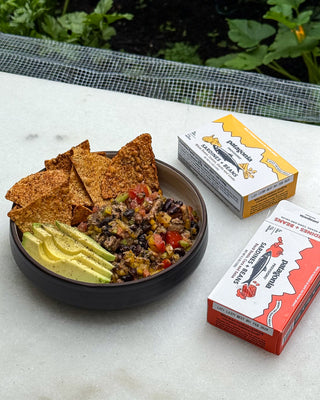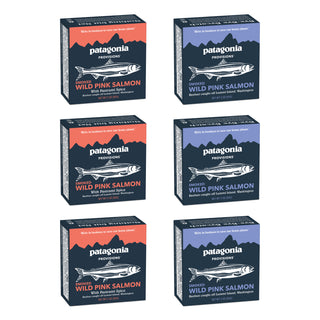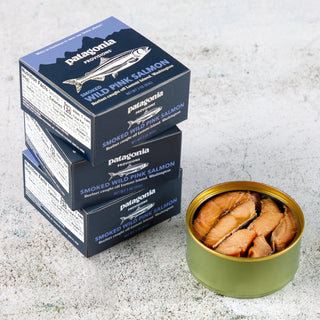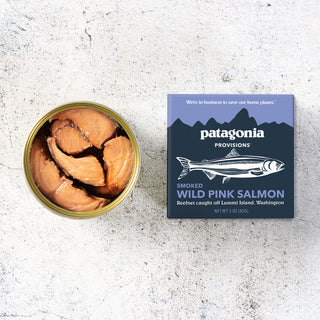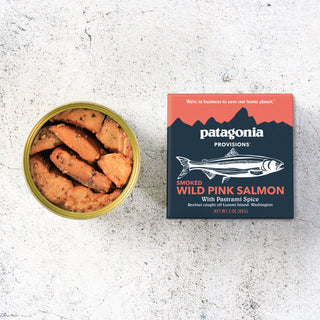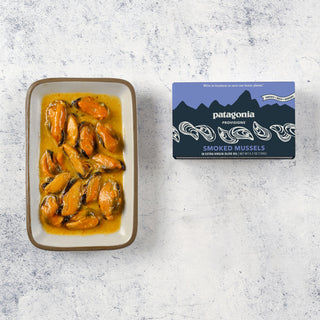All photos from The Ocean Solution by Darcy Turenne
What Is Kelp?
“Seaweed” is probably your first guess, and you’d be right. Dive down into the vast world of seaweeds, though, and you’ll discover that “kelp” more precisely refers to an entire collection of brown ocean algae. The largest of them, like giant kelp, grow in dense, forest-like groupings that can shoot up to 18 inches per day, providing food and habitat for thousands of marine species.
Sounds delicious, right?
Actually, it is. Kelp are most often used for their umami flavor — the “fifth taste” — discovered by the Japanese. Umami is that little somethin’-somethin’ that gives a dish extra depth and savoriness. Some types (like giant kelp) are used in the food industry for their emulsifying properties.
In addition to their tastiness, kelp have been shown to have many health benefits (bonus!) thanks to their naturally occurring vitamins, minerals and antioxidants.

Health Benefits of Kelp
Science is revealing that these seaweeds are good for us, in multiple ways. Eaten regularly, kelp can:
Lower the risk of chronic disease
According to a study in the journal Marine Drugs, kelp contains phytonutrients that may help reduce inflammation, a possible contributor to chronic diseases like arthritis and Alzheimer’s disease. These phytonutrients, called carotenoids, protect in other ways, too: They’re antioxidants, which neutralize cell damage.
Help maintain healthy weight
Kelp seaweeds are rich in fiber—between 25% and 75% of their dry weight is a type of fiber called alignate. Alignates appear to block absorption of fats in the body, which could aid weight loss and reduce cholesterol levels. Kelp also have an antioxidant called fucoxanthin, which may burn off fat, according to initial research at Japan’s Hokkaido University. What’s more, kelp is low in calories—just 4.3 calories per 10-gram serving.
Improve gut health
The fiber in kelp is also prebiotic--meaning it feeds our gut microbes. Well-fed, thriving gut microbes are the key to a healthy gut, which helps our bodies:
- harvest energy from food
- protect against pathogens
- regulate immune function
Keep your thyroid healthy
In order to function well, your thyroid needs iodine. Your body doesn’t produce iodine, so you can only get it through food or supplements. Without enough iodine--.15 mg per day for adults--the thyroid can’t regulate metabolism and brain function, causing fatigue, joint pain and memory problems, among other symptoms.
Kelp is a naturally rich source of iodine, which it absorbs from seawater.
Kombu has the highest average iodine content, at 2523.5 mg/kg, followed by wakame (139.7 mg/kg) and nori (36.9 mg/kg).
Kelp Nutrition
Besides iodine, a 10-g (2-tablespoon) serving of raw kelp contains these important micronutrients:
16 mg calcium
.285 mg iron
12 mg magnesium
4.2 mg phosphorus
8.9 mg potassium
23.3 mg zinc
18 mcg (micrograms) folate
1.28 mcg choline
7 mcg carotene

How to Eat Kelp
While kelp supplements do exist, as with any nutrients it’s best to go to the source and eat kelp directly. Here are some of the most popular types of kelp:
- Bull kelp makes delicious, crunchy pickles, often seasoned with dill, that can be used exactly like dill pickles—on sandwiches, burgers and in potato salads, for instance.
- Kombu is a staple in Chinese, Korean and particularly Japanese cuisine. Dried, it’s a key ingredient for dashi, the stock that is the base of many Japanese soups, including miso soup. Add a piece or two of kombu to simmering chicken stock to make it extra savory.
- Arame, also an Asian standby. Mild, dark-brown arame is wonderful in salads, with fried tofu and folded into rice dishes.
- Wakame, often known as sea mustard, is silky-smooth, dark green and slightly sweet. It’s a standard ingredient in miso soup.
Note: The suggestions here have been reviewed by Tara DelloIacono-Thies, a registered dietitian nutritionist (RDN). However, they should be used for general educational purposes only and not interpreted as customized medical advice or care. Always seek the guidance of a doctor or other qualified health provider to figure out what’s best for you.

